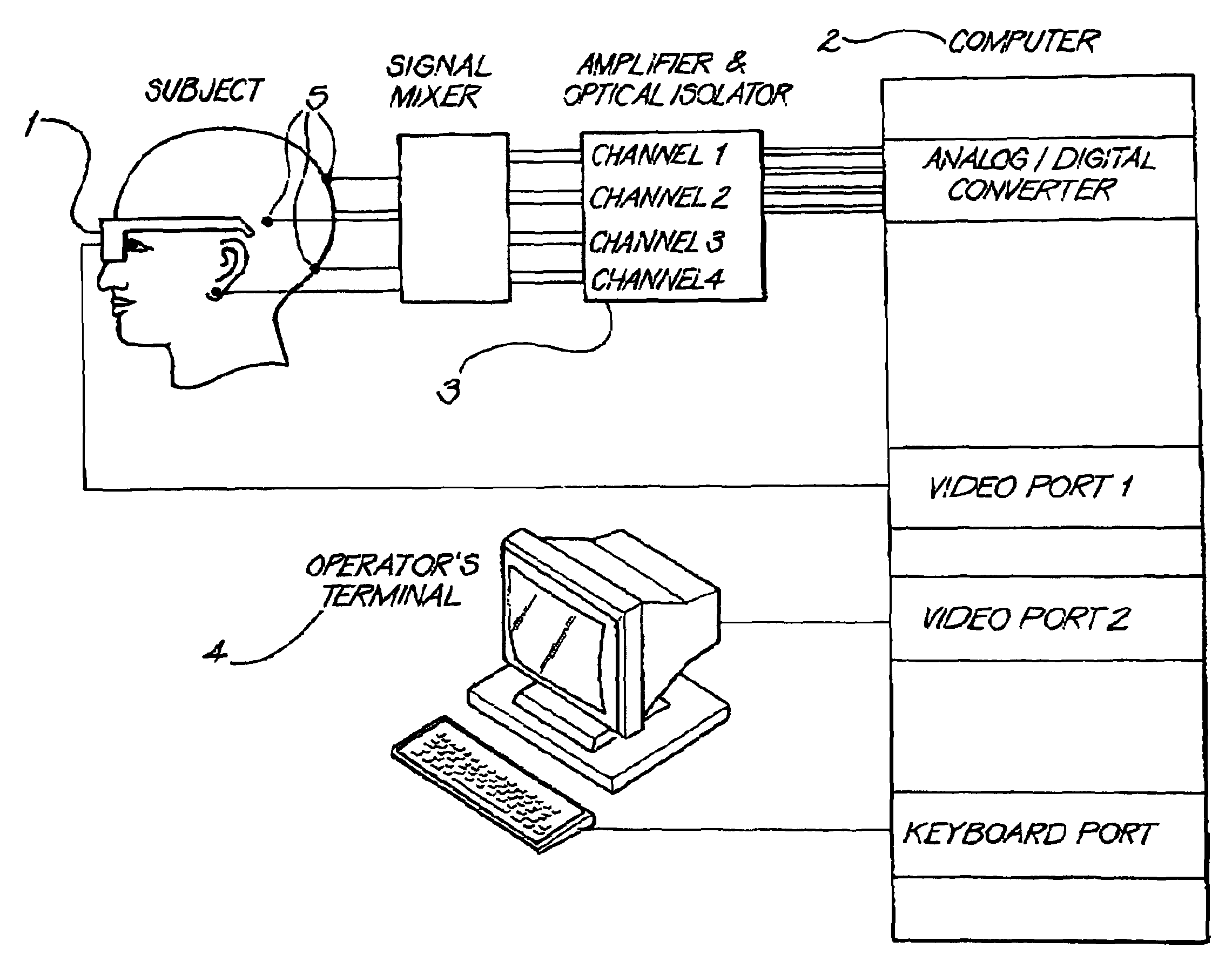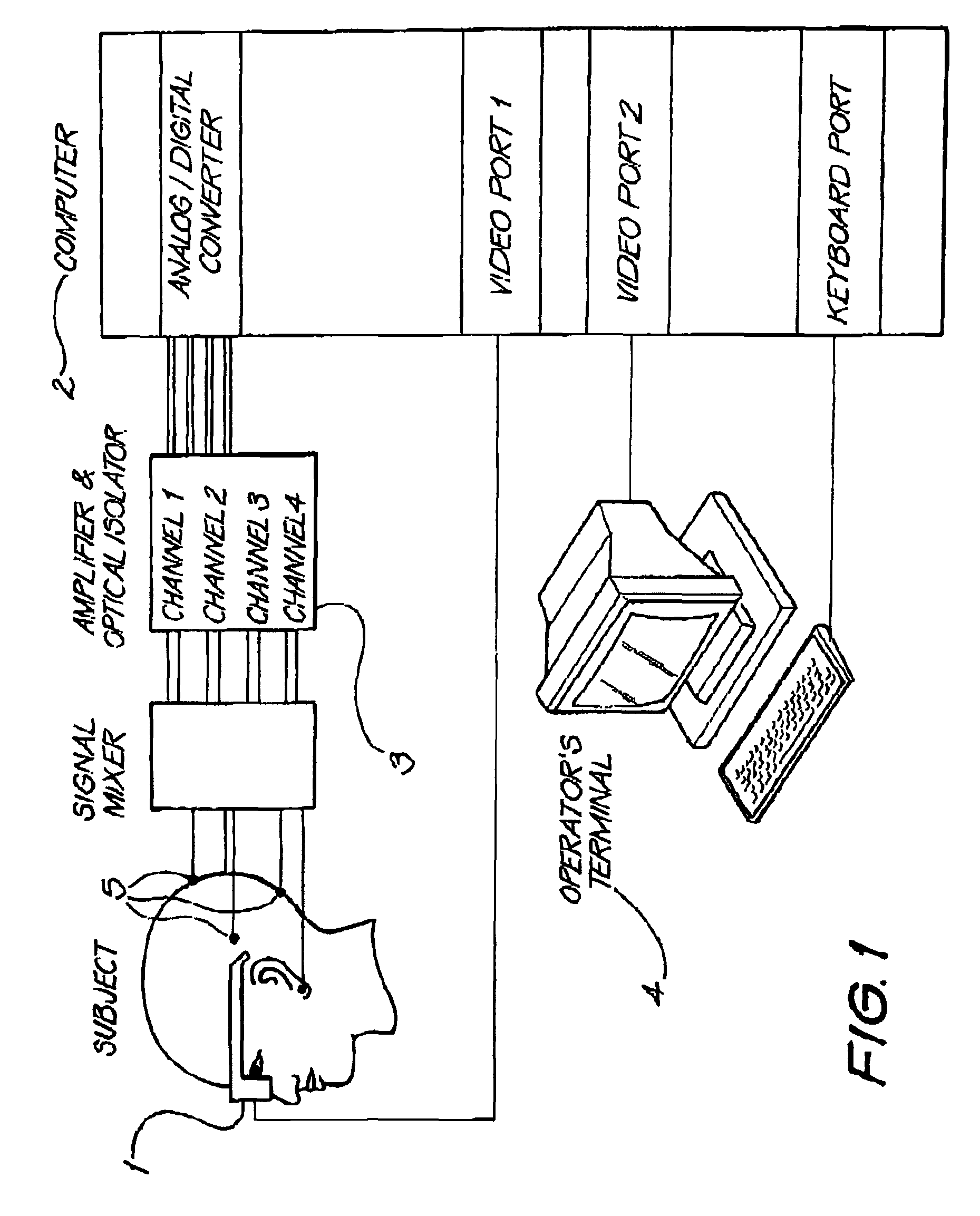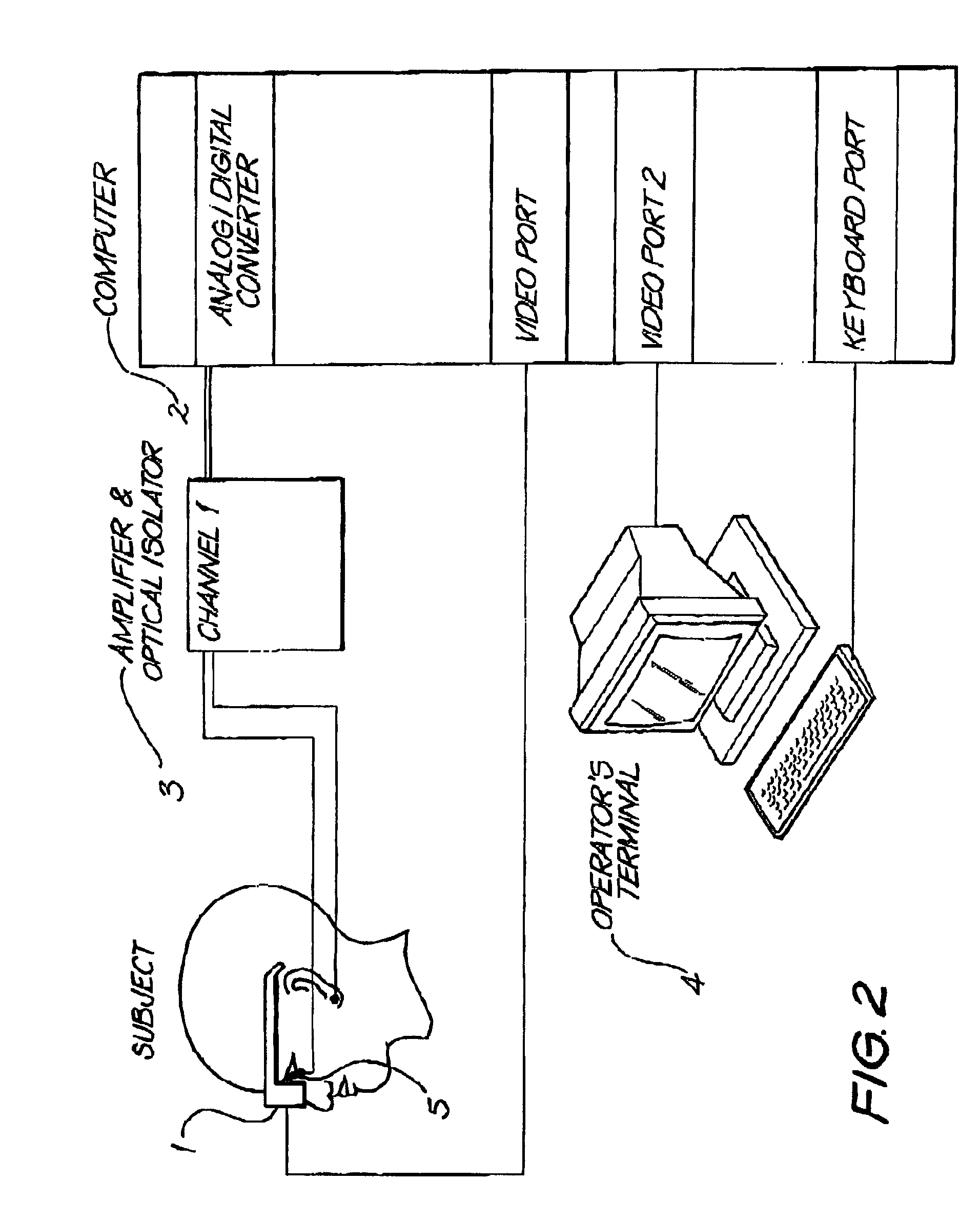Method and apparatus for objective electrophysiological assessment of visual function
a visual function and electrophysiological assessment technology, applied in the field of electrophysiological assessment of visual function, can solve the problem of limiting the sensitivity of applying values from a normal data base, and achieve the effects of reducing the variability range, reducing the inter-individual variability of multifocal vep recordings, and reducing the range of variability
- Summary
- Abstract
- Description
- Claims
- Application Information
AI Technical Summary
Benefits of technology
Problems solved by technology
Method used
Image
Examples
Embodiment Construction
[0031]FIG. 1 shows a schematic of the apparatus of VEP recording using virtual reality goggles (1), which present the display to the subject. The goggles are connected to a computer (2) with a linked video board that generates the multifocal stimulus. Recording electrodes on the scalp (5) and a ground reference eletrode (shown on tho earlobe), detect the VEP signal from one or more recording channels (in this case four channels are shown). The signals are conducted to an amplifier (3), before being processed by software for presentation on the operators display (4). Results can be compared for each eye, or between the two eyes of a subject with respect to normal reference values.
[0032]FIG. 2 shows a schematic of the apparatus for multifocal ERG recording using virtual reality goggles (1). The set up is the same as in FIG. 1 except that the recording electrode is placed in contact with the eye or eyelid. A ground electrode is required (shown on the earlobe). Only one channel recordin...
PUM
 Login to View More
Login to View More Abstract
Description
Claims
Application Information
 Login to View More
Login to View More - R&D
- Intellectual Property
- Life Sciences
- Materials
- Tech Scout
- Unparalleled Data Quality
- Higher Quality Content
- 60% Fewer Hallucinations
Browse by: Latest US Patents, China's latest patents, Technical Efficacy Thesaurus, Application Domain, Technology Topic, Popular Technical Reports.
© 2025 PatSnap. All rights reserved.Legal|Privacy policy|Modern Slavery Act Transparency Statement|Sitemap|About US| Contact US: help@patsnap.com



